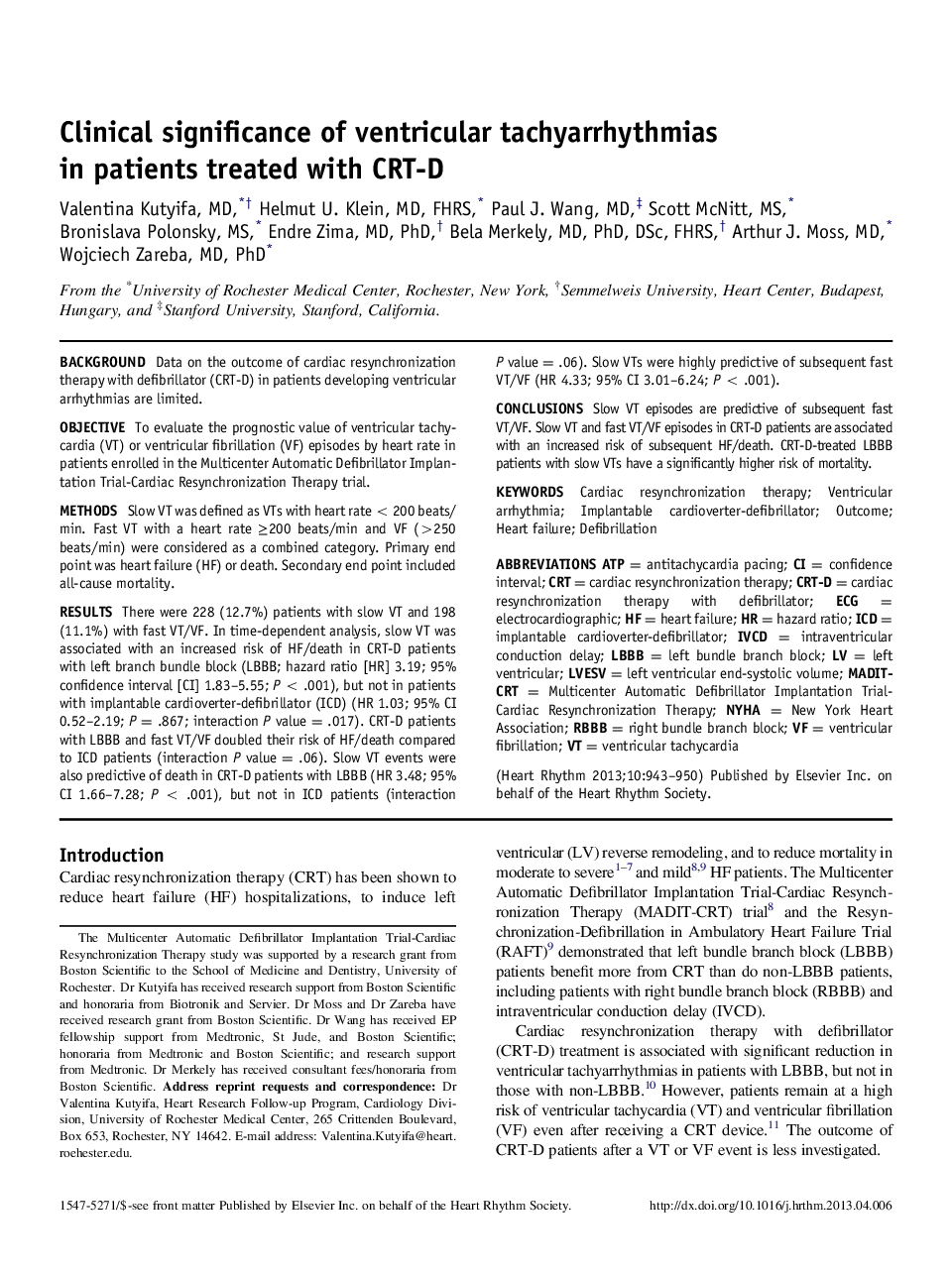| کد مقاله | کد نشریه | سال انتشار | مقاله انگلیسی | نسخه تمام متن |
|---|---|---|---|---|
| 2922258 | 1175841 | 2013 | 8 صفحه PDF | دانلود رایگان |

BackgroundData on the outcome of cardiac resynchronization therapy with defibrillator (CRT-D) in patients developing ventricular arrhythmias are limited.ObjectiveTo evaluate the prognostic value of ventricular tachycardia (VT) or ventricular fibrillation (VF) episodes by heart rate in patients enrolled in the Multicenter Automatic Defibrillator Implantation Trial-Cardiac Resynchronization Therapy trial.MethodsSlow VT was defined as VTs with heart rate < 200 beats/min. Fast VT with a heart rate ≥200 beats/min and VF (>250 beats/min) were considered as a combined category. Primary end point was heart failure (HF) or death. Secondary end point included all-cause mortality.ResultsThere were 228 (12.7%) patients with slow VT and 198 (11.1%) with fast VT/VF. In time-dependent analysis, slow VT was associated with an increased risk of HF/death in CRT-D patients with left branch bundle block (LBBB; hazard ratio [HR] 3.19; 95% confidence interval [CI] 1.83–5.55; P < .001), but not in patients with implantable cardioverter-defibrillator (ICD) (HR 1.03; 95% CI 0.52–2.19; P = .867; interaction P value = .017). CRT-D patients with LBBB and fast VT/VF doubled their risk of HF/death compared to ICD patients (interaction P value = .06). Slow VT events were also predictive of death in CRT-D patients with LBBB (HR 3.48; 95% CI 1.66–7.28; P < .001), but not in ICD patients (interaction P value = .06). Slow VTs were highly predictive of subsequent fast VT/VF (HR 4.33; 95% CI 3.01–6.24; P < .001).ConclusionsSlow VT episodes are predictive of subsequent fast VT/VF. Slow VT and fast VT/VF episodes in CRT-D patients are associated with an increased risk of subsequent HF/death. CRT-D-treated LBBB patients with slow VTs have a significantly higher risk of mortality.
Journal: Heart Rhythm - Volume 10, Issue 7, July 2013, Pages 943–950